Cp与Pp的一些概念
T=target T=目标值 USL=upper specification limit USL=规格上限 LSL=lower specification limit LSL=规格下限 CL=center line CL=中心值 UCL=upper control line UCL=管制上限 LCL=low control line LCL=管制下限
StDev(Within)=estimate of within subgroup process standard deviation StDev(Within)=组内标准差
StDev(Overall)=estimate of overall process standard deviation StDev(Overall)=总标准差
1 The reasons there are two main expressions for "population" and "sample"” is that one is "biased estimator" and the other is not. “母体”与“样本”之所以有两种表达公式,是因为一个是有偏估计,另一个则不是。 How much real practical difference is there between using a standard deviation with n in the denominator versus one with (n-1) 计算标准差使用分母为n和n-1的两个公式,现实究竟有多大的差异? With thirty points you are under 2% in disagreement. So in industrial situations it is always to use the (n-1) formula. 30个数据就会存在2%的差异,所以在工业生产中,通常使用n-1的公式。
Most of the data we‘ve collected are individual data or multiple readings for subgroup data. 我们收集的数据通常是单独的数据或是多次测量的多组数据。
PROCESS CAPABILITY is defined as the 6 sigma range of a process's inherent variation, where sigma is usually estimated by R-bar/d2 and where inherent variation is defined as that portion of process variation due to common causes only. 过程能力定义为6sigma(3sigma控制线)过程的固有偏差,这里的sigma通常使用R-bar/d2计算,而固有偏差则仅是一般原因造成的,为过程偏差的一部分。 PROCESS PERFORMANCE is defined as the 6 sigma range of a process's total variation where sigma is usually estimated by s, the sample standard deviation 过程表现则定义为6sigma(3sigma控制线)过程的全部差异,这里的sigma是用样本的标准差来计算的。
4 Cpk---Process capability index attempts to answer the question “does my process in the long run meet specification?” CpK---过程能力指数用来回答“过程长期运行时是否能满足要求?”
5 Ppk---Proce6 "Long Term" versus "Within" and "Short Term" versus "Overall" it seems antinomy. “长期”“组内”和“短期”“全部”看起来是自相矛盾的。, To my opinion, process should be stable in the long run if not we calls the alternate potential process. 在我看来,长期运行下的过程应该是稳定的,如果不是那就称为潜在过程。 Meanwhile, process capability evaluation can only be done after the process is brought into statistical control, that’s to say, the process you studied is stable without BETWEEN VARIATION. 同时,过程能力的研究只有在过程已处于统计管制之下才能进行,也就是你所研究的过程已消除了组间差异。ss performance index attempts to answer the question "does my current production sample meet specification ?" PpK---过程表现能力用来回答“目前过程生产的样品能否满足要求?”
The reason is simple: Cpk is a prediction, and one can only predict something that is stable. And process performance indices should only be used when statistical control cannot be evaluated. 原因很简单:Cpk只是一个预测,只能对稳定的东西作出预测,而过程表现PpK则应该用在还没有进行管制的过程。 Then comes to the problem or misunderstand: process in long run (potential process) only has within variation, i.e. short term variability. Also, overall variation is equal to long term variability we often say. 于是问题或误解就产生了:长期运行下的过程(潜在过程)只有组内变异,也就是短时间内的变化,而总变异就是我们通常讲的长时间的变化。
So we often assosiate "Cpk"with"Long Term","Within"and"Potential" and "PpK"with"Short Term"and"Overall". 所以,我们就经常把Cpk与“长期”“组内”“潜在”联系在一起,而Ppk则与“短期”“全部”联系在一起。 Avoid confusion of "Long Term" and "Short Term", Even MINITAB no longer uses long-term & short-term. As of Release 13 they changed their terminology so it now associates Cpk with the descriptor "Potential (Within)" and Ppk with the descriptor "Overall". 为了避免混淆“长期”与“短期”,就连MINITAB也不再使用“长期”与“短期”,13版本就更改了相关术语,Cpk使用潜在(组内),Ppk使用全部。
when use Cp/CpK & Pp/PpK for Cp/Cpk 1 Data from control charts 2 no less than 100 data points for Pp/PpK 1 process is chronically unstable but meeting the specifications and in a predictable pattern. 2 Data from short term(短时间) studies: a snap shot of the process 3 less than 100 data points 4 when we do PPAP
@@@@@@@@@@@@@@@@@@@@@@@@@@@@@@@@@@@@@@@@@@@@@@@@@@@@@@@@
技术咨询QQ:9730049
⑶华东-塑料技术配色Q群: 247503816(只收技术人员)
微信17706771466
email: jishu@ouloong.com
网址: http://www.loongou.com http://www.ouloong.com
^^^^^^^^^^^^^^^^^^^^^^^^^^^^^^^^^^^^^^^^^^^^^^^^^^^^^^^^^^^^^^^^^^^^^^^^
2015-01-22 UL94阻燃标准及测试方法 |
| ||||||||||||||||||
| 2015-01-21洛氏硬度(HRC)、布氏硬度(HB)等硬度对照区别和换算 | |||||||||||||||||||
| 2015-01-21万能试验机操作规范 | |||||||||||||||||||
| 2015-01-21 激光打标机原理 | |||||||||||||||||||
| 2015-01-20 2011-2015 年中国改性塑料市场 | |||||||||||||||||||
| 2015-01-16 聚碳酸酯(PC)耐应力开裂解决方案(四氯化碳+威猛先生) | |||||||||||||||||||
| 2015-01-15导电导热级阻燃聚碳酸酯 | |||||||||||||||||||
| 2015-01-14可代替进口产品介绍 | |||||||||||||||||||
| 2015-01-14 免喷涂免电镀增强尼龙开发项目简介 | |||||||||||||||||||
| 2015-01-13 喂料系统改造的必要性简单说明 |
| 2015-01-22 | 工作文件:员工顶岗制度 |
| 2015-01-22 | 工作文件:员工培训管理办法 |
| 2015-01-22 | 工作文件:消防安全管理规定 |
| 2015-01-22 | 工作文件:灭火器操作、点检规程 |
| 2015-01-22 | 工作文件:灼热丝试验仪操作规范 |
| 2015-01-22 | 工作文件:检测中心管理制度 |
| 2015-01-22 | 工作文件:产品质量事故分析处理 |
| 2015-01-22 | 工作文件:缺口制样机操作规范 |
| 2015-01-22 | 工作文件:冲击试验机操作规范 |
| 2015-01-22 | 工作文件:水平/垂直燃烧测试仪操作规范 |
##############################################################
 PC、PC/ABS的增韧剂(M-01)
PC、PC/ABS的增韧剂(M-01) 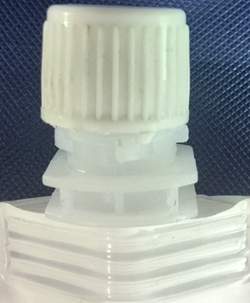 洗衣液吸嘴/盖子专用料/改性H...
洗衣液吸嘴/盖子专用料/改性H... 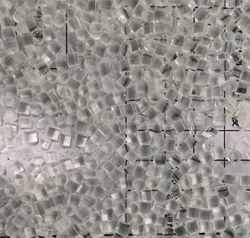 乙烯-乙烯醇共聚物(EVOH)
乙烯-乙烯醇共聚物(EVOH) 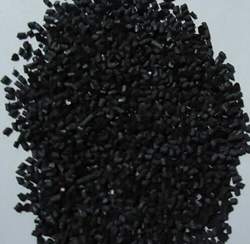 导电塑料(PC、PBT、PA等)
导电塑料(PC、PBT、PA等) 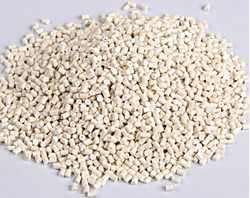 C45断路器专用增强阻燃PA
C45断路器专用增强阻燃PA 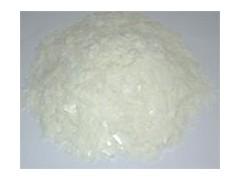 流动性改进剂
流动性改进剂  免喷涂塑料
免喷涂塑料 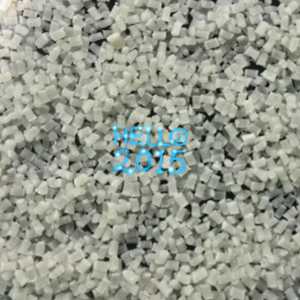 透明无卤增强阻燃PC
透明无卤增强阻燃PC 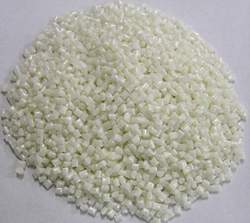 无卤阻燃PC/ABS合金
无卤阻燃PC/ABS合金 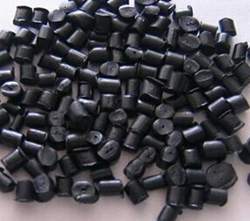 填充PP
填充PP
站内搜索
联系我们
地址: 浙江省温州市平阳县萧江镇后林工业区
邮编: 325403
联系人: 黄经理
手机: 13868332170
邮箱: cto@loongou.com

Copyright ©2004-2024 龙瓯|尼龙流动性剂|抗浮纤剂|PC稳定剂|抗黄变剂H10|超支化树脂|PC扩链剂|无卤阻燃剂|PC流动性剂|三氧化二锑替代品|MCA增效剂|防玻纤外露剂|加工助剂||流动助剂|流动性剂|流动改性剂|锑替代品|阻燃协效剂|MCA协效剂|扩链剂|酯交换抑制剂|熔指调节剂|PP-V2阻燃剂|高效流动性剂|稳定剂H10|超支链化树脂|尼龙加工助剂|梳状树脂|树脂状树脂|耐析出无卤阻燃剂|PP高效阻燃剂MCA阻燃改善剂|PC耐寒增韧剂|尼龙断链剂|酯交换抑制剂|防玻纤外露剂|加工助剂|流动助剂|氧化锑代替品|高硅增韧剂|流动改性剂|温州|瑞安|乐清|PC|PA|PC/ABS合金|PBT|PET|PC/PBT|PPO|导电塑料|MBS|浙江|上海|江苏|宁波|台州|杭州|苏州|绍兴|金华|嘉兴|湖州|无锡|镇江|南京|常州|安徽|徐州|厦门|南通|安徽 All Rights Reserved.
地址: 浙江省温州市平阳县萧江镇后林工业区 邮编: 325403 联系人: 黄经理
手机: 13868332170
邮箱: cto@loongou.com 技术支持: 网聚网




